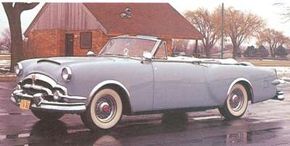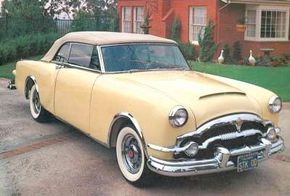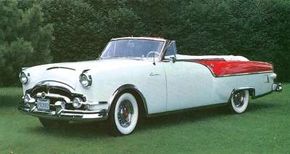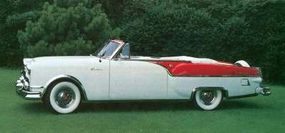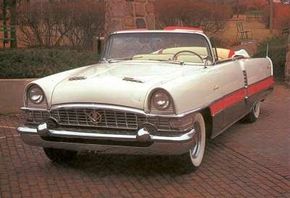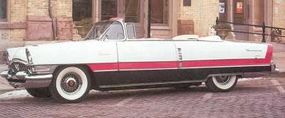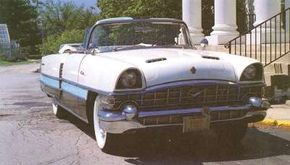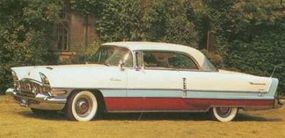Back in the days when American cars were about the only ones real Americans could buy, including the era of the 1953-1956 Packard Caribbean, your average Detroit automaker wasn't satisfied it had arrived until it offered a "limited edition." That term is fairly vague, and they didn't use it much then, though production of such cars was undeniably limited.
Advertisement
Yet in the booming seller's market of the late Forties, the American industry could hardly meet demand for its standard models. So except for a few low-volume traffic-builders like the Chrysler Town & Country, Detroit simply spewed forth a "turgid river of jelly-bodied clunkers," to use Ken Purdy's phrase -- and the public happily bought every one.
Inevitably, though, the market became satiated and real competition returned by about 1950. Three years later, Ford launched a sales "blitz" against Chevy, shipping huge numbers of cars to dealers regardless of orders, and the competition became murderous. One result of this cutthroat marketing was the "sports car," which usually meant anything with a convertible top, lots of performance, a few unique styling touches, and top-of-the-line price tag.
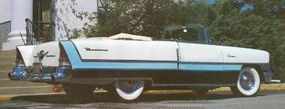
Of course, some of these were true sports cars, like the Nash-Healey and Chevrolet's Corvette. Most, however, were just modified standard ragtops with higher-grade trim and, sometimes, a hotter engine. But whether genuine or fake, they had the same purpose as their late-Forties forebears: to attract the proletariat into the local emporiums, where it might eyeball the latest-and-greatest, then depart in one of the more plebian models.
In the upper reaches of 1953's regimented market, Buick, Cadillac, Oldsmobile, and Packard fielded two-ton "sports cars" with wheelbases of 120-plus inches and no less than 165 horsepower: respectively, the Skylark, Eldorado, Fiesta, and Caribbean.
The last was no hasty reply to General Motors. Packard conceived the Caribbean around the time Cadillac first thought of Eldorado (1951), and for much the same reasons: a more youthful image and extra publicity. (Chrysler was similarly moved to release the C-300 in 1955, though it was far more sporting than any of these.) But whereas the GM cars were in-house designs issued mainly to gauge public response to forthcoming features like the wraparound windshield, the 1953 Caribbean had little that was really new.
That, perhaps, stems from its origins at the Henney Company of Freeport, Illinois, long-time supplier of Packard's professional-car bodies. Henney president C. Russell Feldmann hoped to expand his Packard business by tailoring a low-volume, high-buck "sports" model, and had designer Richard Arbib working on a proposal by the fall of 1951. The result, named Pan American, duly appeared at the various 1952 auto shows.
Find more information about the Pan American concept on the next page.
For more information about cars, see:
- Classic Cars
- Muscle Cars
- Sports Cars
- Consumer Guide New Car Search
- Consumer Guide Used Car Search
Advertisement

